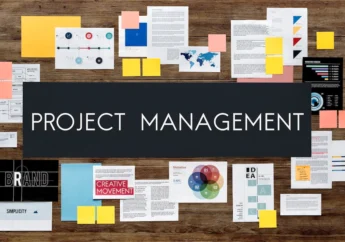These 7 Economic And Business Trends Will Define The 2020s And Beyond
by Arnab Dey Business 20 June 2022

The world is changing at a dizzying pace. It’s difficult enough for people whose job it is to follow economic and technological trends to keep up.
What hope does the rest of us have?
Rest easy. We’ve done the hard work for you and identified seven powerful trends likely to drive the economy — and our lives — in the 2020s and beyond.
Here Are Seven Crucial Economic And Business Trends:

1. Precision Manufacturing
If you haven’t paid attention to the manufacturing industry in a while, you’re in for a surprise.
The bleeding edge of manufacturing occurs in clean, bright workspaces supervised by well-paid workers with college degrees. Dirty, noisy, dangerous factory floors are increasingly endangered.
Precision manufacturers use computer-aided tools to achieve previously unthinkable tolerances — down to the thousand or ten-thousandth of a centimeter, beyond the human eye’s capability for discernment. Their equipment will only get more sophisticated — and more impactful to daily life.
2. Manufacturing Automation
Manufacturing automation is not a new trend. Robots have been making factories more efficient for decades.
But the pace of change is accelerating, aided by leaps forward in precision manufacturing technology and in computing power. The dream of the dark factory is steadily moving out of the realm of science fiction and into the near future, though we’re still a few technological leaps — and regulatory tweaks — from truly autonomous production.
3. Quantum Computing
No one doubts that the pace of Moore’s Law has slowed; some argue it’s completely broken. Physics is to blame: as computer chips get smaller and denser, they produce more heat than even the most efficient computer fans can dissipate. And, anyway, there’s only so much information you can fit on a silicon wafer.
Quantum computing remains experimental and error-prone, but for how much longer is anyone’s guess. Most observers believe we’ll eventually achieve quantum supremacy, the proof-of-concept whereby quantum computers consistently and accurately solve problems that conventional computers can’t solve within reasonable timeframes.
4. Natural Language Processing
You use natural language processing every time you ask Google or Siri a question. You still notice when it goofs, but eventually, this technology will be totally indistinguishable from human comprehension.
At that point, many of the clerical processes we currently accept as costs of doing business will be ripe for automation.
5. Prefabricated Construction
Construction bottlenecks and skyrocketing materials costs are among the factors responsible for an unsustainable rise in housing prices and rents since the late 2010s.
In the near term, falling demand may gain the overstretched homebuilding industry some breathing room, but it’ll remain vulnerable to future price shocks unless and until something fundamentally changes.
Improvements in prefabricated construction technology could bring about that change. The challenge is partly about scale — we simply don’t have the production capacity or logistical infrastructure to deliver prefabricated units — and partly about actual processes.
Both can be solved, and when they are, we’ll unlock the true productive potential of a notoriously inefficient sector.
6. The Internet of Things
For real this time. After a couple of false starts in the 2010s, the IoT space looks set to take off in a big way — moving beyond gimmicks like smart lights and useful but limited security and efficiency applications to truly remake the business of managing a home.
Smart fridges, dishwashers, laundry machines — these are just the beginning. Laundry-folding robots might not be on the horizon, but the not-too-distant future will see the typical home automate much of the drudgery that currently saps our productivity.
7. Nuclear Power
Really? On a list of trends to watch in the 2020s, not the 1960s?
Yep. After being written off as a dead technology following the Fukushima disaster, nuclear power is enjoying a resurgence thanks to geopolitics — specifically, Europe’s turn away from Russian oil and gas — and quiet technological breakthroughs that have made smaller-scale reactors much more feasible.
The holy grail of nuclear fusion power remains on the distant horizon, though forthcoming demonstration projects could nudge us closer if successful. Regardless, the 2020s will see ground broken on a number of new nuclear projects, with potentially game-changing results for environmental and energy policy.
Place Your Bets on the Future
The “smart money” believes these seven trends — yes, even nuclear power — will change the world in the years to come.
They’ve got other ideas too. With billions of people working and innovating every day, the global economy is far too complicated for seven trends to explain everything.
So don’t place your bets on the future just yet. Do your research, learn your stuff, and stand behind only those ideas that earn the courage of your convictions.
Read Also:







































































































